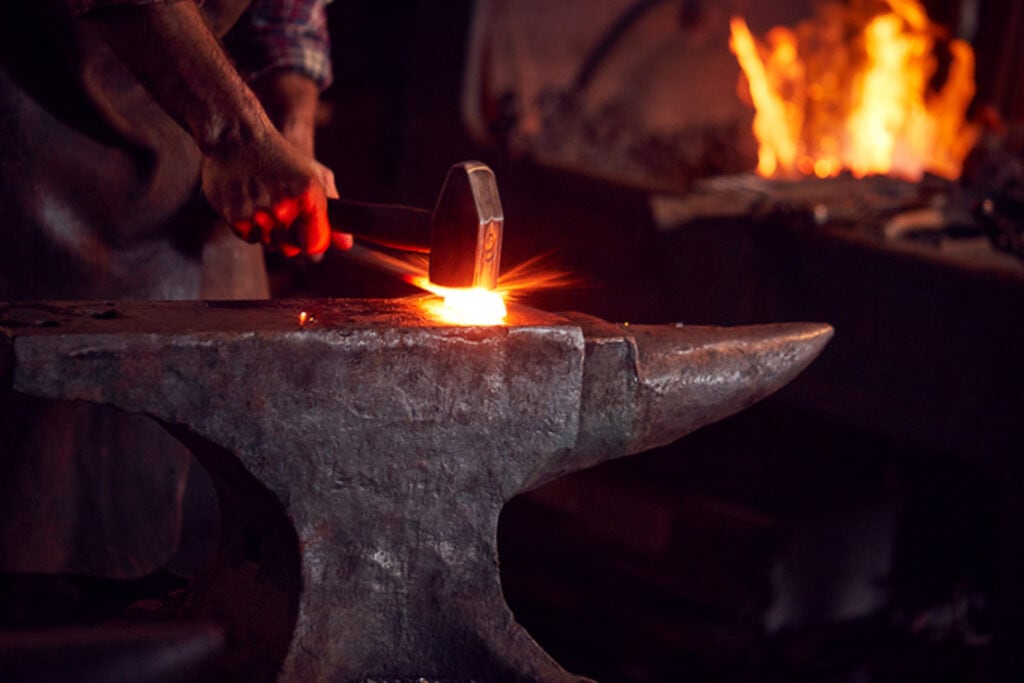The surge of new American folk schools is reviving, sustaining and teaching a rich heritage of old crafts. These institutions, dedicated to craft preservation, are educational centers of their community. They are also pivotal in keeping skills that were once part of everyday life from fading into obscurity.

Beyond formal classes, these schools often host sing-alongs, community projects and social gatherings, which serve as platforms for people to come together, share experiences and build lasting relationships. These activities provide more than just entertainment; they weave a fabric of community solidarity, binding people together through shared interests and collective learning experiences. In this way, American folk schools do more than just preserve old crafts; they cultivate a sense of belonging and togetherness, vital in today’s fast-paced and often isolated world.
Folk schools in the United States
Modern folk schools have the ability to offer diverse classes of many different sorts for adults and children alike. They can also be considered community centers where folks can gather for wit and wisdom in all seasons. Folk schools also serve as non-competitive education centers that are all-inclusive and offer lifelong learning opportunities for students of all ages. According to Dawn J. Murphy, board member of the Folk Education of America Alliance, “Folk schools work to build connection and agency. They support individuals and communities to connect deeply with ourselves, our ancestors, and to our time and place on the path to community strength and joy, the Beloved Community.”
The revival of old-fashioned trades
At the heart of American folk schools is the revival of ancient trades. Blacksmithing, for instance, has seen a remarkable resurgence due to a popular television series, “Forged in Fire.” These schools offer extended courses, sometimes lasting months or years, where students can immerse themselves in the craft under the guidance of experienced artisans. The appeal of blacksmithing lies in its historical significance and its modern applications, blending tradition with contemporary creativity.
Broom making, another craft taught in some folk schools, combines functionality with artistic expression. Material lists and detailed instructions ensure that students walk away with the knowledge to build their own handmade brooms at home. Alternatively, attendees can simply enjoy their custom handmade product with no plans to continue the craft in the future.
Barrel making, essential in wine and whiskey production, is another intricate process taught in these institutions. Through their programs, folk schools contribute significantly to sustaining this skilled craft, which is integral to various culinary and beverage industries.
Smaller classes for smaller crafts
Folk schools also offer smaller, bite-sized classes as introductions to crafts like painting, whittling, candle making and more. These introductory sessions are designed to spark interest, enabling students to continue exploring these skills in their own time. The smaller class sizes ensure personalized attention and a more intimate learning experience, making these ancient trades accessible to everyone.
Building community
Beyond teaching, these schools also focus on building community. Many offer open, low-cost workshops or even free events, inviting local communities to engage with traditional crafts. These events serve as educational opportunities and gatherings that strengthen community bonds and foster a shared appreciation for historical skills.
All folk schools are unique
It’s important to note that all folk schools teach different crafts. Some schools have specialties like boat building, while others focus on cooperative builds like cabins in conjunction with the National Park Service. There are hundreds of classes, large and small, for all ages all year round.
Traveling? Look for a folk school in the area. A quick half-day class can yield a souvenir that is sentimental and handmade. Alternatively, gain a depth of knowledge of the local natural area on a foraging walk.
Find a folk school near you
As the folk school movement grows, more and more schools are opening. Look for one near you in the Folk School Alliance Directory. Not all schools are listed in the directory, so word of mouth is a great way to find a school or share a school near you. Be sure to ask friends and family if they know of any folk schools and likewise share your new-found knowledge with them.
American folk schools are more than educational centers; they are custodians of history and culture. They play a critical role in reviving and sustaining old crafts, ensuring that these skills are not lost to time. By nurturing a new generation of craftsmen and artisans, these schools are vital in bringing new life to traditional practices and preserving them for future generations.
Their existence is a testament to the enduring appeal and importance of keeping our connections to the past alive in an ever-evolving world. Feeling digital fatigue? Find a folk school nearby and get relief.
Laura Sampson of Little House Big Alaska is on a mission to teach modern family-oriented home cooks how to make old-fashioned foods new again. She shares her passion for home cooking, backyard gardening and homesteading on her website and blog.